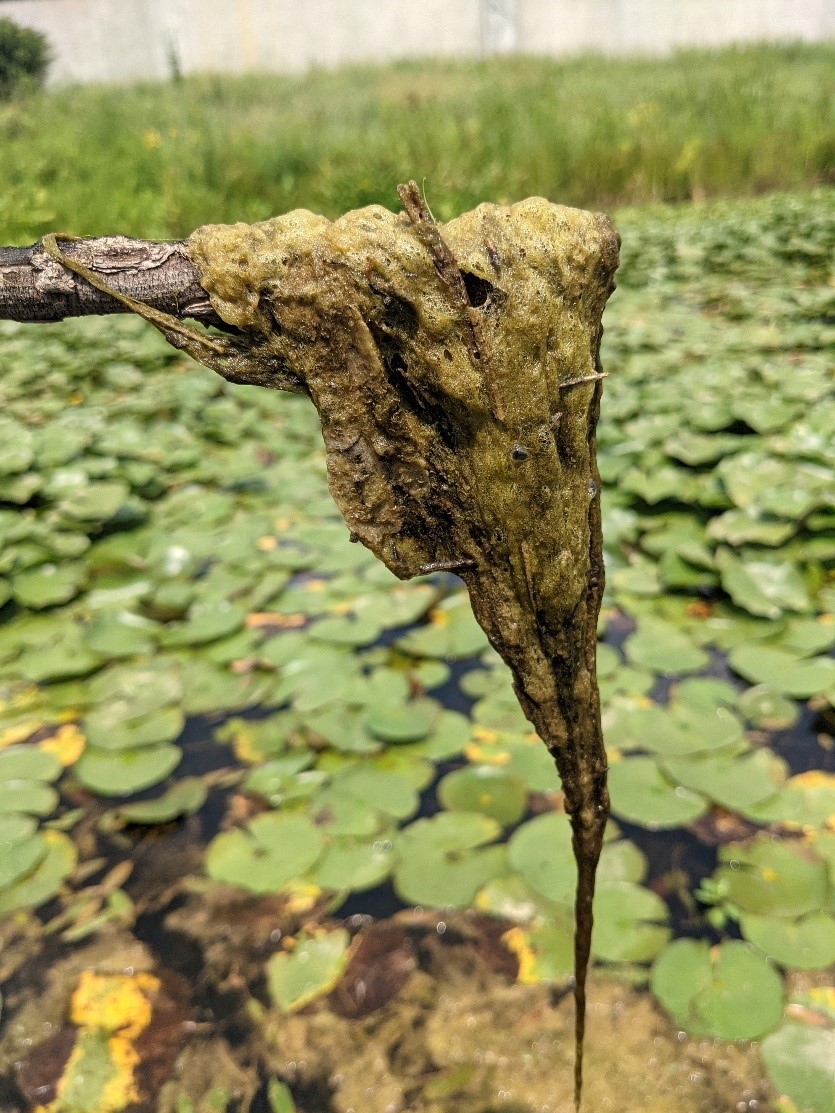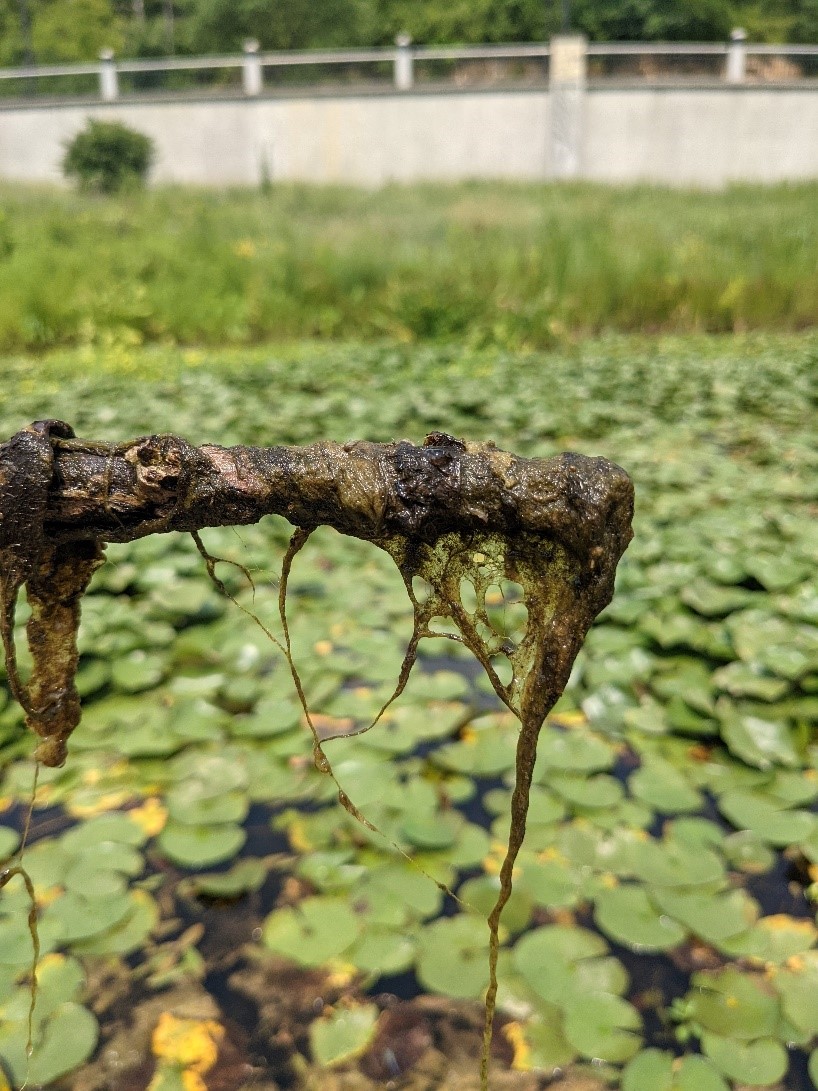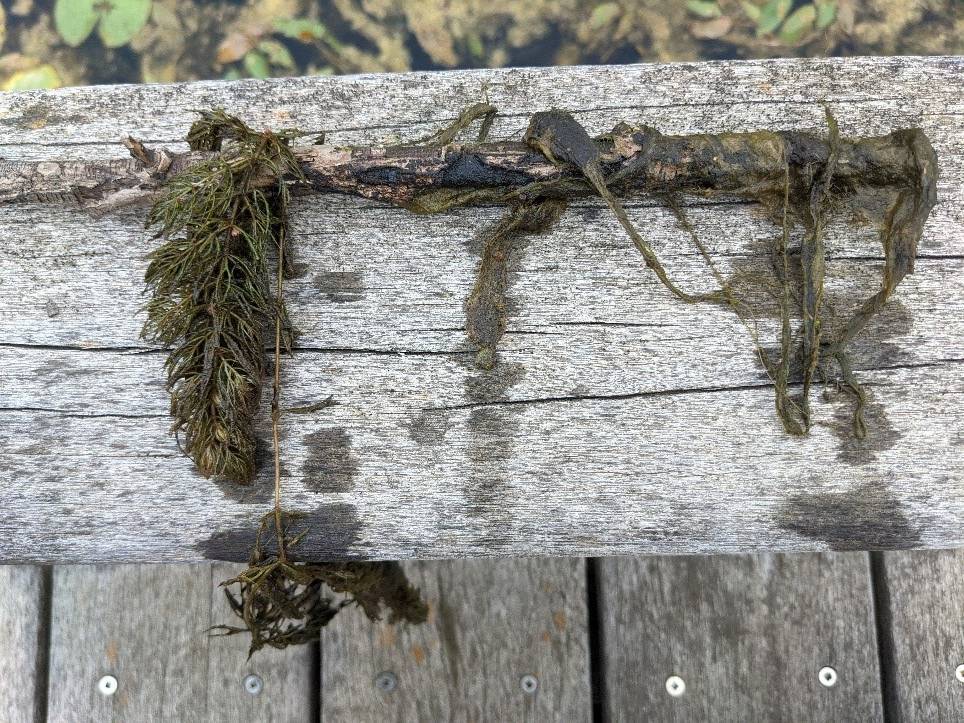Algae Control
Return to Crops and Livestock Agent Articles
One of the most common aquatic weeds to ponds is filamentous algae. It starts early as the spring warms and will hang around pond and lake shores all season long. The hot sunny days of summer promote algal and vegetation growth, and many local waterbodies have excess nutrients that increase the growth as well. Most pond owners don’t appreciate the mats of filamentous algae that fill with air bubbles and float on the surface of the water, often wondering how to get rid of the ‘pond scum’ that covers the surface of the water.


Photos: Strings of filamentous algae clump together after being pulled up from a pond on the end of a stick.First things first, determine if you have filamentous algae. You can perform “The Stick Test” to make sure you are actually dealing with filamentous algae in your pond. Take a stick, put it in the water and slowly scoop up the “scum” then check to see if it has leaves, has visible roots, has visible stems, coats the stick with green goop or clumps onto the stick like hair. You may need to pull apart the clump to determine if it has any plant characteristics. If it looks like green hairs, then it’s filamentous algae.

Photo: A stick lays on a dock after being pulled from the water. On the left side Coontail drapes over the stick with visible stems and whorls of leaves, while on the right side filamentous algae clings to the stick like hair.
Control options for filamentous algae include physically pulling it out, applying aquatic dyes, or applying copper-based aquatic herbicides. Grass carp are not recommended or effective in controlling filamentous algae because it isn’t a preferred food source for them. Certain species of Tilapia will eat filamentous algae, however they usually don't control the growth to a noticeable level.
Choosing the best algae control method requires owners to match their control options to their desired management goals.
Mechanical Removal
- Doesn’t affect fish or wildlife.
- Can be strenuous physical labor.
- Typically requires an aquatic rake.
- Removed algae should be removed from the drainage area of the water body to avoid nutrients filtering back to water but can be used as compost or fertilizer for plants elsewhere.
- Likely will require repeated applications within a season.
Aquatic dye
- Effective at reducing algae growth and is non-toxic.
- Will decrease growth of all submerged plant species and primary productivity in the pond.
- Reduced primary productivity can decrease zooplankton and macroinvertebrates, which are food for fish and wildlife.
- May require repeated applications within a season and after rain events.
Copper-based herbicide/algicides
- Can be effective for an entire season.
- Shouldn’t be harmful to fish when applied in recommended amounts.
- May need to be applied in batches or spot treatments to avoid depleting dissolved oxygen as the algae decomposes. Decreased dissolved oxygen can lead to fish mortality.
- Copper compounds precipitate to bottom sediments, remaining in the system.
- Always read the herbicide label.
All the management and control options listed above are symptomatic treatments of over-nutrification. Putting in vegetation buffer strips or reducing fertilizers applied in the drainage area can reduce the available nutrients in the waterbody for long-term control. Contact the K-State Research and Extension office in Johnson County and talk to our agents if you have additional questions.
Resources:
